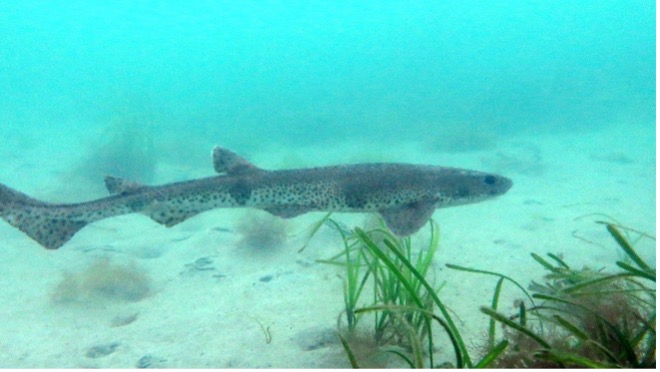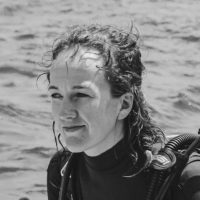
Tintreach

- Title
-
Tintreach – Tracking INTeractions between Renewable Energy and ElasmobranCHs
- Start Date
-
2022
- End Date
-
2026
- Funding Body
-
SFI
- Coordinator
- Research Partners
-
Queens University Belfast
- Principal Investigators & Project Manager
- Research Area
-
Elasmobranch Ecology, Biotelemetry and movement, Coastal and Marine Systems, Energy Transition
Introduction
Marine renewable energy (MRE) will undergo a rapid expansion in Ireland over the next 30 years. The Irish government’s stated objectives are to have 5 GW of offshore renewable energy (ORE) in place by 2030, increasing to 20 – 25 GW by 2050. MRE includes wind, wave, and solar energy, with wind and wave being either fixed or floating. Fixed turbines are by far the most mature of these technologies and thus the near-term 5-year objective (5 GW of ORE) will most likely be met by fixed wind turbines with solid foundations at depths of less than 50 m. Given the scale of this target, the number of devices involved, and the quantity of cables needed to connect everything to the Irish grid, there is a considerable need to understand the impacts these developments will have on the receiving environment and sensitive species therein. There is a substantial body of research investigating the potential impacts of ORE devices on cetaceans and seabirds, however, there are large knowledge gaps pertaining to non-protected species, particularly elasmobranchs (sharks, skates, and rays).
Two of those knowledge gaps are 1) does the electromagnetic field (EMF) generated around electrical transmission cables influence the behaviour of elasmobranchs? and 2) do the artificial reefs resulting from ORE infrastructure influence the behaviour of elasmobranchs?
Aim
This project will, 1) investigate the effect of EMF from submerged electrical cables on the behaviour and movement pattens of demersal elasmobranch species in a natural setting, and, 2) Investigate the effect of artificial reefs on the behaviour and movement patterns of demersal elasmobranch species.
Publications
Haberlin, D., Cohuo, A. and Doyle, T. K. (2022) Ecosystem benefits of floating offshore wind. Cork: MaREI – Science Foundation Ireland Centre for Energy, Climate and Marine, University College Cork. https://cora.ucc.ie/handle/10468/13967






